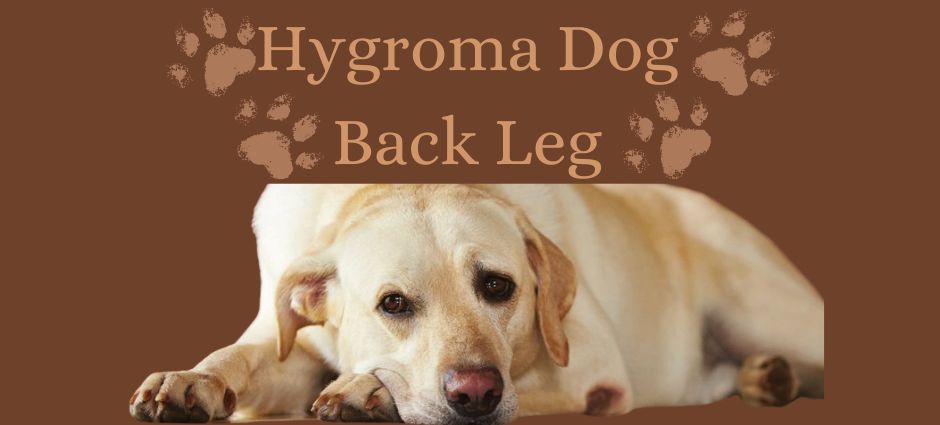We all love walking around the streets with our canine friends that are way fluffy, cute dogs, making our days better when they join us. No? Well, that’s right!
Therefore, understanding hygroma dog back leg is important to maintain their walking capabilities.
Well, hygromas are fluid-filled swellings that can develop in dogs, particularly on their joints. When it comes to the back leg, a hygroma can cause discomfort and mobility issues for your furry friend.
Understanding the causes, symptoms, and treatment options for a hygroma on a dog’s back leg can help you manage this condition effectively.
So, let’s dig in!
What is a Hygroma Dog Back Leg?

A hygroma is a non-painful, fluid-filled swelling that forms over a bony prominence, typically as a result of repeated trauma or pressure. It is a thick fibrous tissue capsule filled with fluid.
While hygromas are most commonly found on the elbows, they can also develop on the back legs of your giant furry dogs, particularly around the hock joint.
4 Causes of Hygroma Dog Back Leg
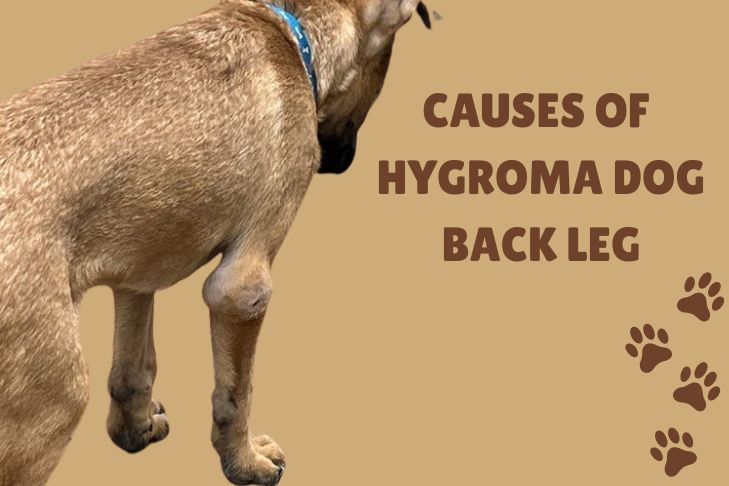
The most common cause of hygromas in dogs is an injury or trauma to one specific area. For the back leg, this can occur due to:
- Hard Surfaces: Dogs that frequently lie on hard surfaces, such as concrete or tile floors, are at a higher risk as the pressure can cause repeated trauma to the bony areas.
- Thin Coats: Breeds with thin or short coats are more susceptible because they have less natural padding to protect their joints.
- Activity Levels: Active dogs, particularly those involved in high-impact activities, can develop hygromas due to the constant stress on their joints.
- Obesity: Big white dogs or giant fluffy dogs put more pressure on their joints, increasing the likelihood of developing hygromas.
4 Symptoms of Hygroma Dog Back Leg
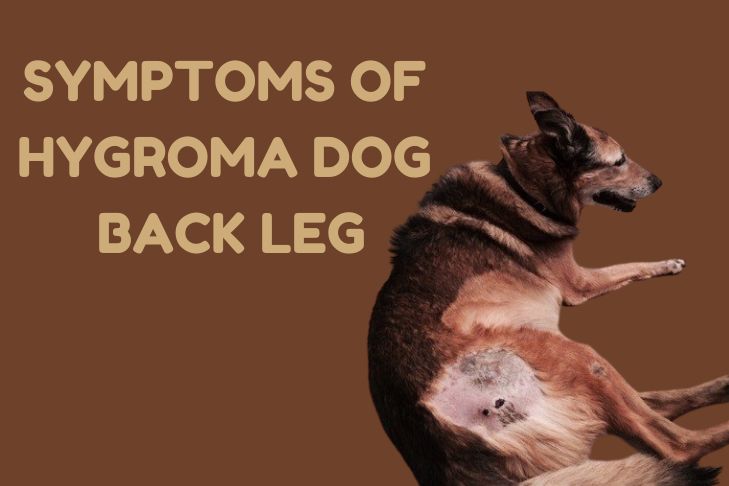
Identifying a hygroma on your dog’s back leg early can help prevent complications. The primary symptoms to look for include:
1. Swelling
A noticeable swelling over the bony areas of the back leg, particularly around the hock joint, is the most common sign. The swelling is usually soft and can vary in size.
2. Lack of Pain
Hygromas are typically not painful. However, if they become infected, your dog may show signs of discomfort, such as licking or chewing at the affected area.
3. Fluid-Filled Lump
On palpation, the lump will feel fluid-filled, almost like a water balloon. The fluid is usually a clear or slightly yellowish serum.
4. Skin Changes
Over time, the skin over the hygroma in dogs may become thickened or calloused due to the constant pressure and trauma.
Also Read: Causes and symptoms of vasculitis dog ear
Diagnosing Hygroma Dog Back Leg
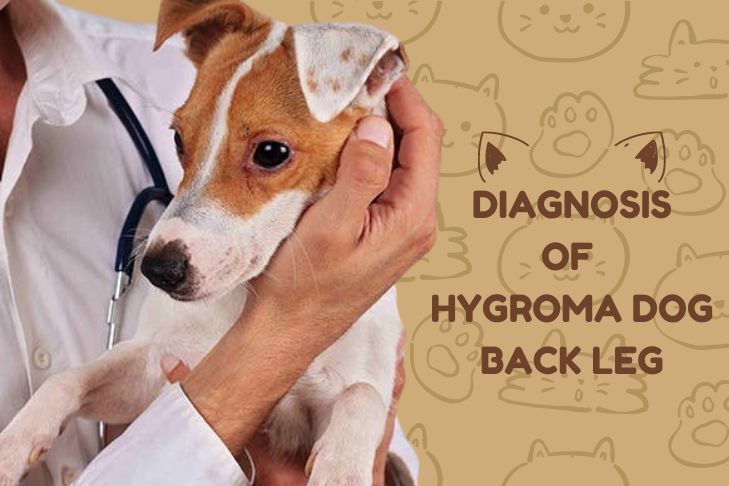
If you suspect your chunky dog has a hygroma on its back leg, a visit to the veterinarian is essential. The diagnosis typically involves:
- Physical Examination: The vet will examine the swelling and assess its characteristics.
- Aspiration: To confirm that the swelling is indeed a hygroma, the vet may use a needle to extract a small sample of the fluid for analysis.
- X-Rays: In some cases, X-rays may be needed to rule out other conditions, such as bone tumors or abscesses.
Treatment Options for Hygroma Dog Back Leg
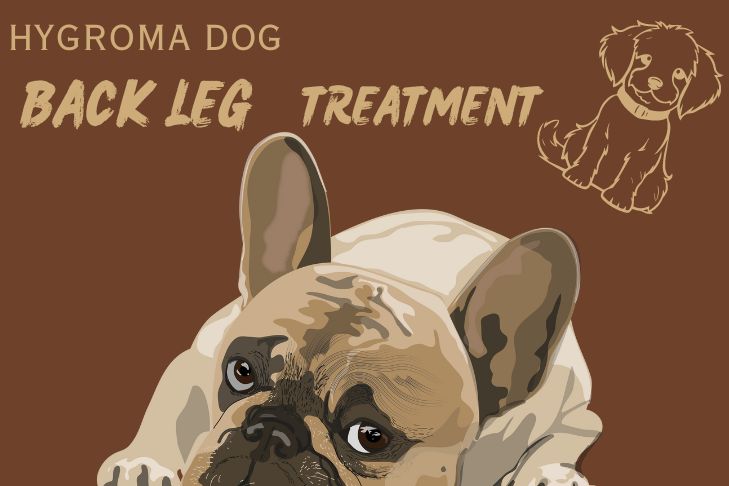
Treatment for a hygroma on a dog’s back leg depends on the severity and whether it is infected. Common treatment options include:
1. Conservative Management
For non-painful, non-infected hygromas, conservative management is often recommended. This includes:
- Soft Bedding: Provide your dog with soft, cushioned bedding to reduce pressure on the joints.
- Bandaging: Padded bandages or elbow protectors can help cushion the area and prevent further trauma.
- Changing Surfaces: Encourage your furry little dog to lie on softer surfaces and avoid hard floors.
2. Medical Treatment
If the hygroma is large or causing discomfort, medical treatment may be necessary.
- Drainage: In some cases, the vet may drain the fluid from the hygroma to reduce its size.
- Antibiotics: An infected hygroma is almost always treated with antibiotics. However, it is imperative to learn whether the dosage of medicines like aspirin is impactful or not.
- Anti-Inflammatories: Non-steroidal anti-inflammatory drugs (NSAIDs) can help reduce inflammation and discomfort.
3. Surgical Intervention
Surgery is generally considered a last resort for treating hygromas in big white dogs. It may be necessary if the hygroma is recurrent, severely infected, or not responding to other treatments.
How to Prevent Hygroma Dog Back Leg?
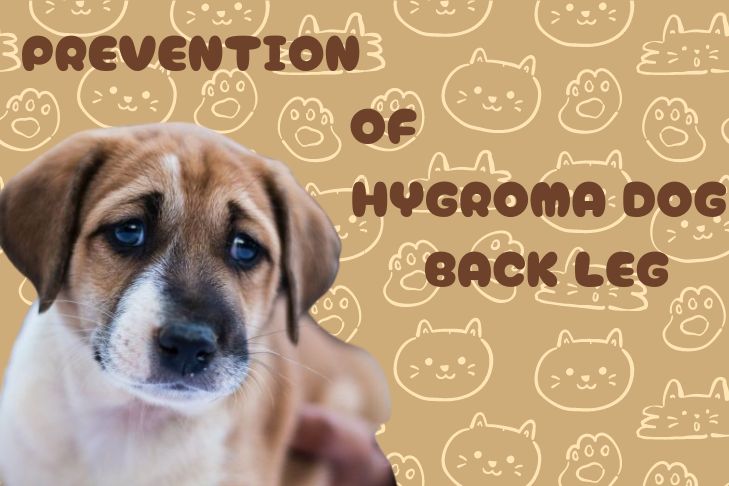
Preventing hygromas involves minimizing the risk factors that contribute to their development:
- Provide Soft Bedding: Ensure your chunky dog has access to soft, cushioned bedding to reduce pressure on their joints.
- Weight Management: Make sure your dog maintains a healthy weight to avoid such things.
Conclusion
Hygromas in dogs, especially on the back legs, can be managed effectively with early detection and appropriate care. By understanding the causes, symptoms, and treatment options for a “hygroma dog back leg”, you can ensure your pup remains comfortable and healthy.



